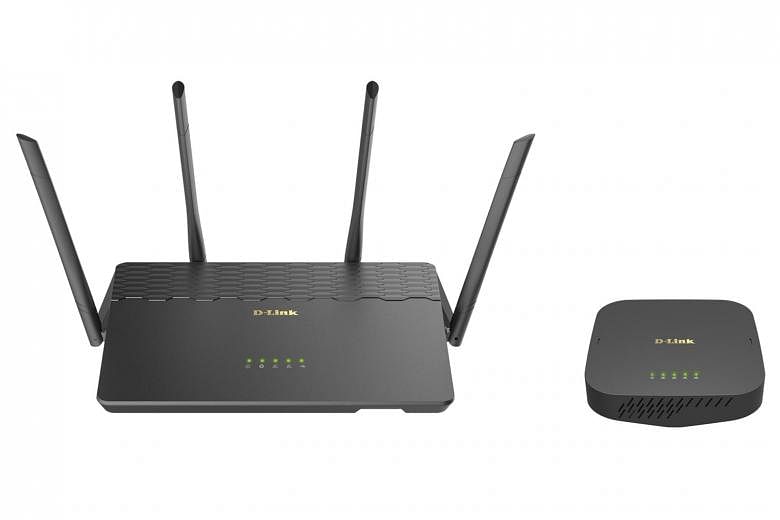D-Link seems to be taking an unusual approach to the Wi-Fi mesh system trend. Instead of building a new product from scratch, the networking firm has seemingly taken a dual-band AC2600 router, paired it with a AC1300 Wi-Fi extender and dubbed it the Covr Wi-Fi System.
I don't mean to disparage the effort to produce the Covr - there is obviously some software magic behind the scenes to ensure that one gets a similar experience as other Wi-Fi systems - but I was not too impressed at first.
To be fair, the Covr works like any other Wi-Fi system. It produces a single network name and client devices automatically switch between the router and the extender. Interestingly, D-Link offers the flexibility of using a companion powerline adapter, to be launched at a later date, that can work together with the Covr.
In a way, the Covr is similar to the Netgear Orbi, which has a rigid router and satellite arrangement that are pre-assigned out of the box. But the Orbi at least attempts to mimic the non-traditional aesthetics adopted by Wi-Fi systems with a vase-like design.
The Covr, on the other hand, looks exactly like the standard router that it is. Its black chassis looks more handsome than most routers, but its four adjustable antennas stick out, unlike the hidden ones on other Wi-Fi systems. However, the Covr router does have four Gigabit LAN ports. There is even a USB port, which is missing in some of its competitors.
As for the range extender, it resembles a media player. It is a black square box with rounded corners. It has two LAN ports and can be easily mounted on the wall.
The Covr has the features you'd expect to find on an entry-level or mid-range router, such as guest networks, port forwarding and file-sharing. A Web browser interface identical to the ones found in other recent D-Link routers is provided. It is clean and responsive, taking 30sec or less to save changes, but it will probably seem overly simplified to experts.
-
TECH SPECS
-
PRICE: $369 (Wi-Fi router + range extender), available next month
ETHERNET INTERFACE: 1 x 10/100/1000 Gigabit WAN, 4 x 10/100/1000 Gigabit LAN (router); 2 x 10/100/1000 Gigabit LAN (extender)
STANDARDS: 802.11a/b/g/n/ac
SECURITY: WPA2, WPS
-
RATING
-
FEATURES: 4/5
DESIGN: 3/5
PERFORMANCE: 3/5
VALUE FOR MONEY: 4/5
OVERALL: 3/5
Like me, these users would also be disappointed by the companion D-Link Wi-Fi mobile app, which seems to merely serve as a way to install additional extenders. But I did not try this as D-Link offers the Covr only as a starter kit (router and extender), with no plans to sell the extender by itself.
Because it does not have a dedicated wireless or wired backhaul for communication between the router and extender, I did not have high expectations of the Covr.
However, it fared decently, with a top speed of 330Mbps when my client device was in the same room as the router. In my bedroom, the speed dropped to around 187Mbps, with my client connecting to the extender. Overall, I measured a signal strength of at least 60 per cent in all parts of my home, which is around 1,500 sq ft.
It will be launched next month at $369, making it the most affordable Wi-Fi system in the market.
• Unlike its rivals, the D-Link Covr literally looks like a glorified router and range extender bundle. Its app is terrible. But the hardware performs decently and it is the most affordable option now.


